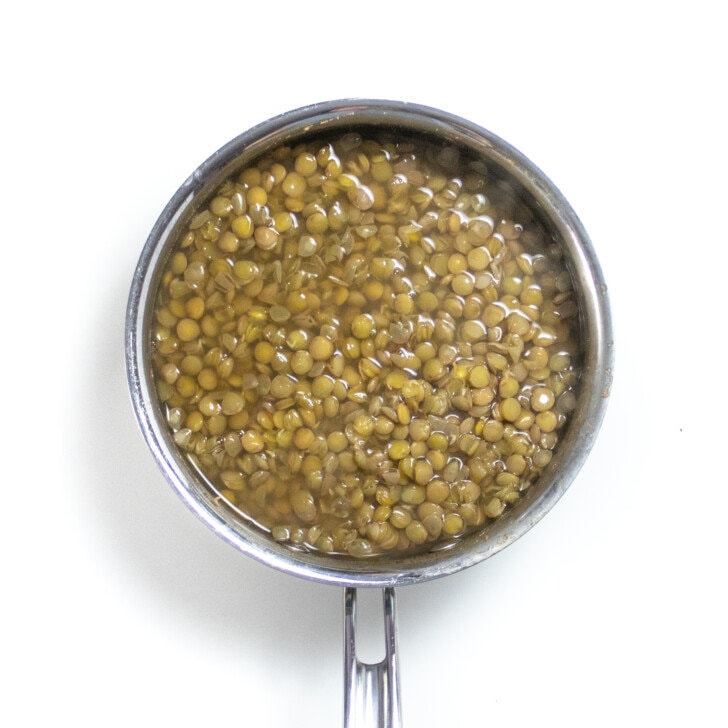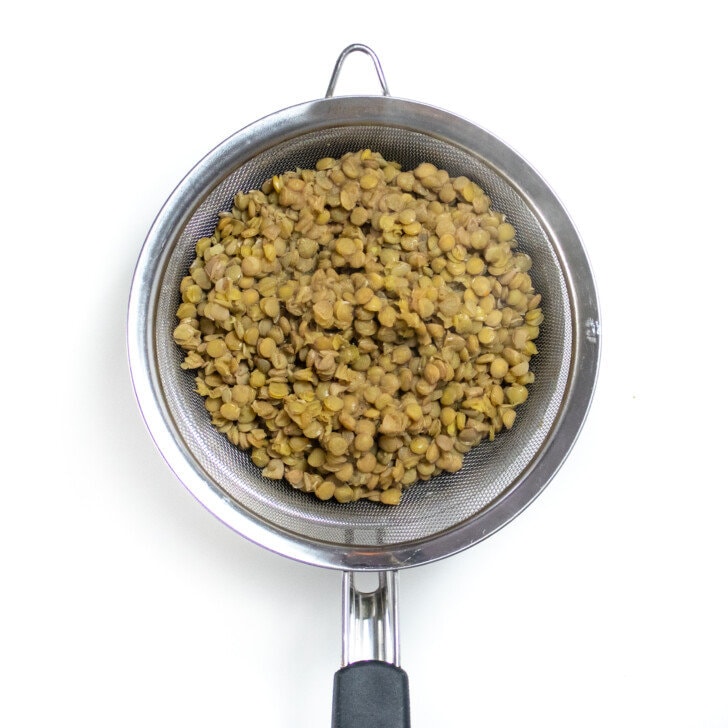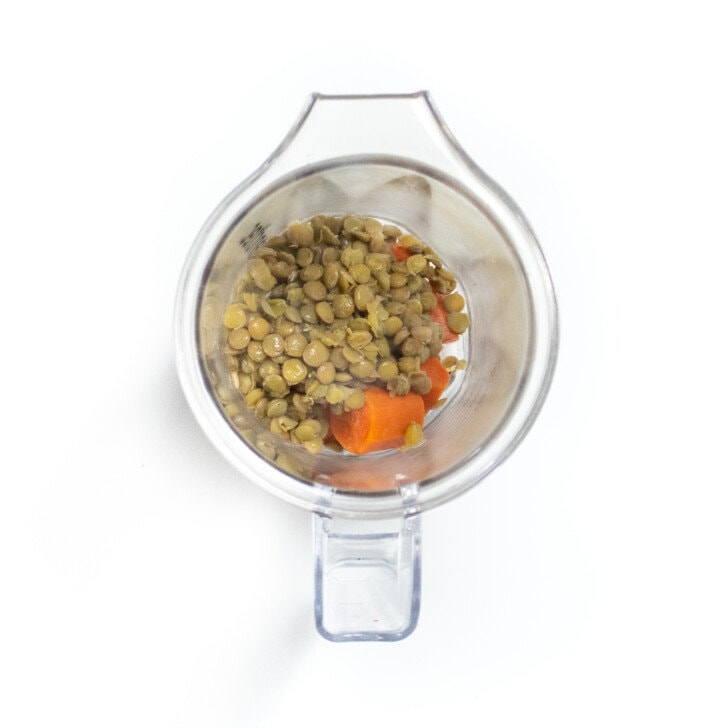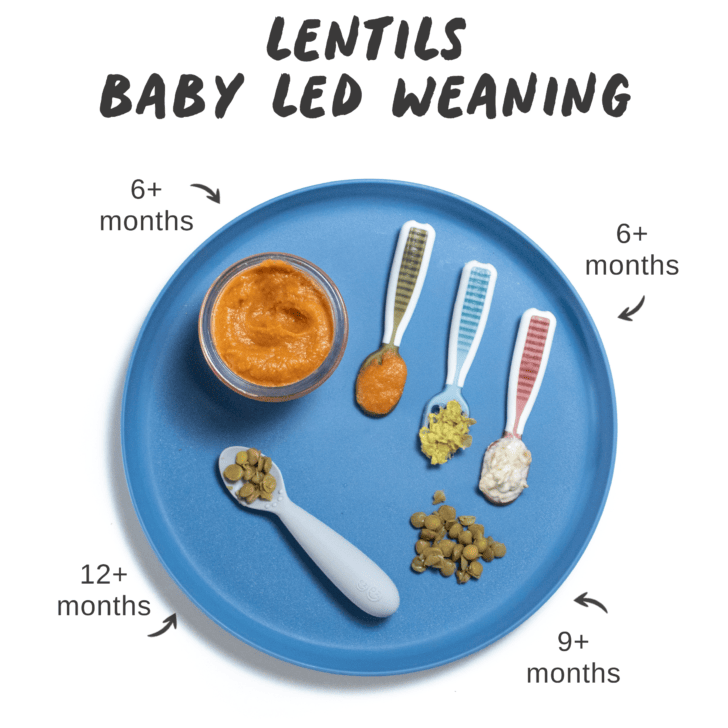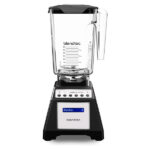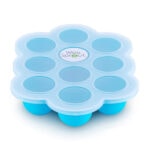How to Serve Lentils to Baby
Learn how to serve lentils for purees and baby-led weaning with our helpful guide. A rich source of protein and fiber, this mighty little legume is also full of essential nutrients. They’re perfect for supporting healthy development in babies and toddlers.

Medically reviewed and cowritten by Jamie Johnson, Registered Dietitian Nutritionist (RDN), and Lauren Braaten, Pediatric Occupational Therapist (OT).
Lentil Baby Food
Want to give your baby all the healthy nutrients that lentils have to offer, but not sure how? I’ve got you!
This complete guide on how to feed lentils to your baby is for you!
Below, you will find everything you need to know on how to cook and serve lentils to your little one – the health benefits, how to serve them to your baby for baby-led weaning or as a puree, how to store these recipes, FAQs, and so much more!
First time making homemade baby food? Then, I would suggest that you start by reading our very in-depth guides – Guide on how to Make Homemade Baby Food if you are starting with purees, or this Complete Guide to Baby-Led Weaning if you decide to do baby-led weaning from the get-go. And be sure to check out my best-selling cookbook, Little Foodie: Baby Food Recipes for Babies and Toddlers with Taste for even more information and recipes!
Lentils for Baby
Watch this video to see how easy it is to serve lentils to your baby!
Reasons to Love Lentils for Baby
- Delicious baby food purees – 6+ months
- Great for baby-led weaning – 6+ months
- Also great for the finger food stage – 9+ months
- Full of essential nutrients for baby
- Different ways for baby to eat – spoon-fed or self-feed
- Easy to make – minimal prep work required

Benefits of Lentils for Baby
So many benefits!! For adults and babies alike, lentils provide a large number of nutrients important for our bodies. They can act as a protein or a veggie, making them incredibly versatile.
- Lentils are full of fiber, which help with digestion and gut health.
- They are a great source of protein, which is necessary for muscle development and keeping bellies full.
- They are high in iron, which is especially important for breastfed babies as their iron stores start to deplete around 4-6 months. Iron in the diet will help prevent iron deficiency anemia.
- Lentils are an excellent source of folate and other B vitamins, necessary for brain and nerve development.
Types of Lentils
There are many different types of lentils and each type offers many nutrients. Here’s a few quick pointers on when you might want to choose a certain type.
- Brown and Green: These types of lentils are bigger and have a flattened lens-like shape. Brown and green lentils cook quickly, about 20-30 minutes. They tend to split and fall apart when cooked, so they are perfect for adding a mild, earthy flavor to soups or purees. Use these to thicken soups as well.
- Red: This orange/reddish/yellow type is also quick cooking, about 20 minutes. They break down quickly, turning mushy, which makes them perfect for thickening soups or sauces. Red lentils are pretty much interchangeable with brown or green lentils.
- French: This type of lentil has a peppery flavor and thicker skin, so they retain their shape when cooked. They also take longer to cook through, about 45-50 minutes. French lentils are great for a side dish or mixing with grains or vegetables.
How to Pick Lentils
Here are a couple of pointers on what to look for when buying lentils.
- Shape and texture: Look for lentils that are dry, firm, clean, and unshriveled.
- Color: In general, the color of whichever type of lentil you choose should be fairly uniform.
Frequently Asked Questions
You can introduce baby to lentils as soon as they are ready to start solids, which is usually around 6 months of age.
Lentils are not known to be a choking hazard, but technically anyone can choke on any food, so always supervise baby when they are eating.
They are not a common allergen, but as with any food, introduce a small portion and be aware of any signs that might be an allergic reaction.
No, in fact, because of their high fiber content, they can help alleviate constipation.
Tools Needed
These tools will make it a lot easier for you to serve lentils to your baby. For more of my favorite kitchen tools, make sure to check out my shop.
- High chair
- Suction bowl or baby bowl
- Baby spoon
- Bib with catch pocket
- Sleeved bib
- Blender or food processor
- Steamer insert with lid
- Freezer tray
- Storage containers for fridge
- Stasher bag
- Reusable pouches
- Easy to hold fork and spoon
- GOOtensils
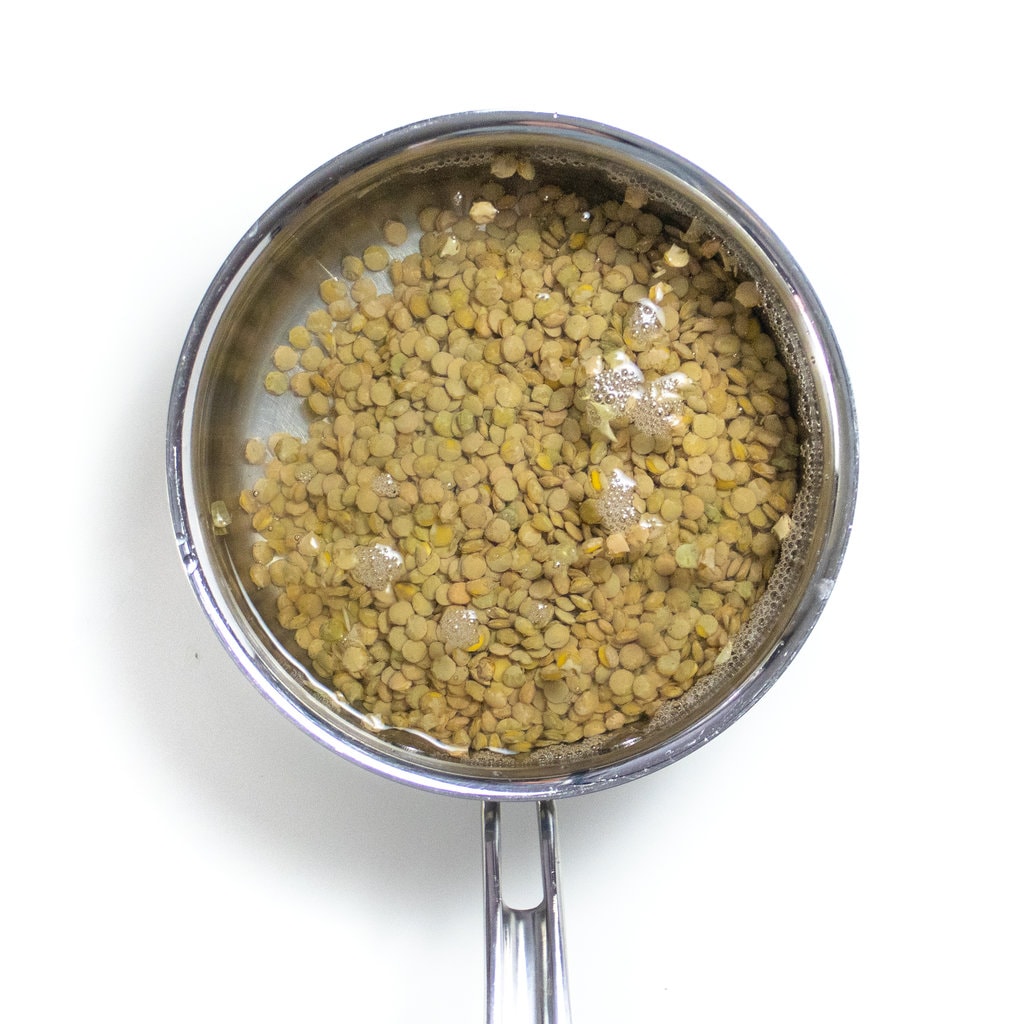
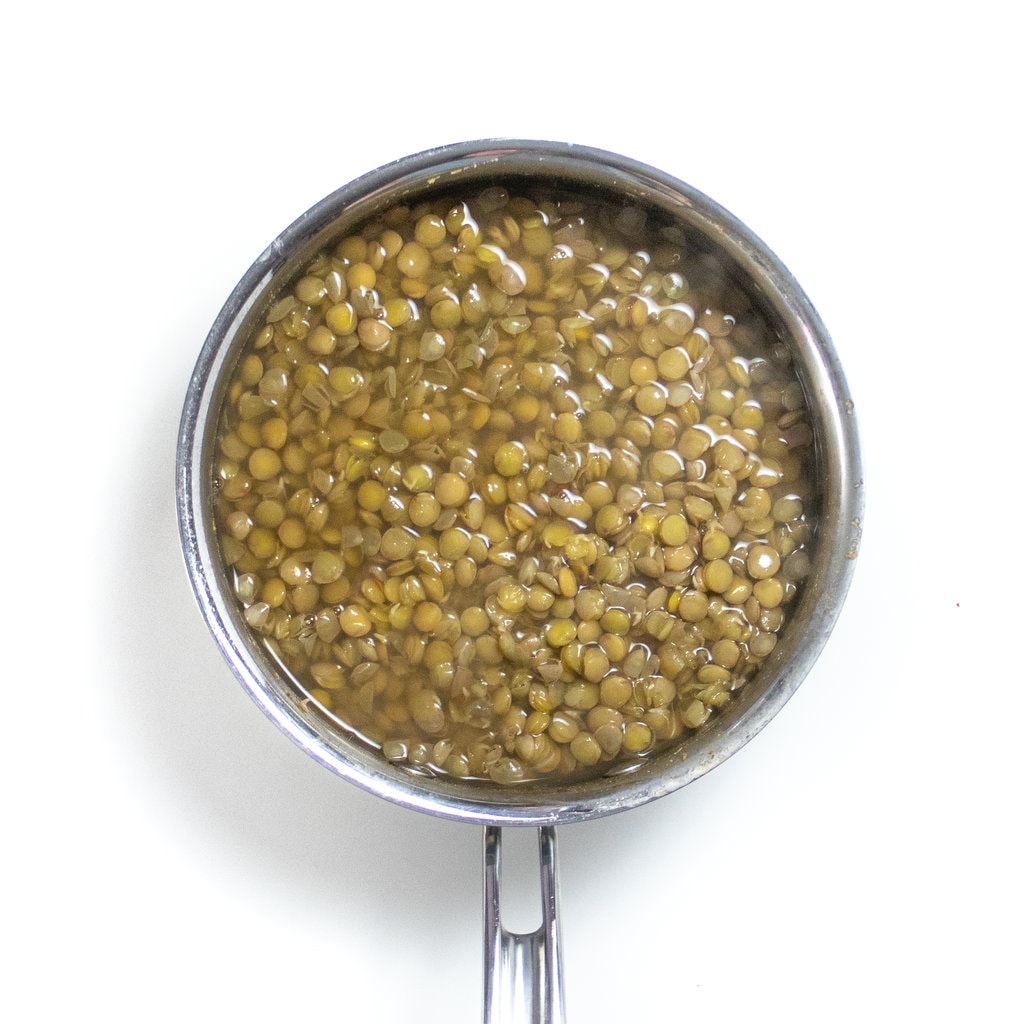
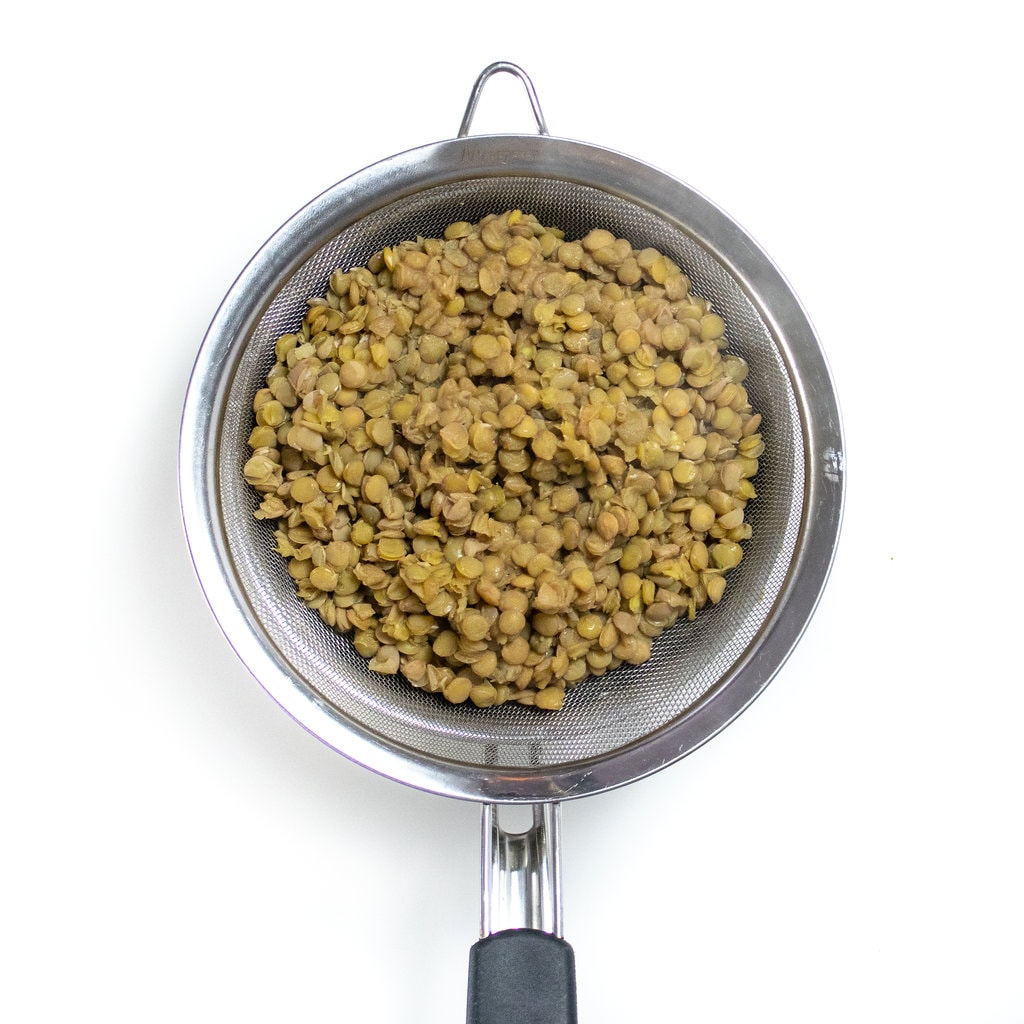
How to Prepare Lentils
Preparing lentils for your baby is quite easy. Here are a couple of our favorite ways:
Stovetop
Rinse lentils in a strainer or colander under running water. Transfer lentils to a small saucepan and add water. Bring to a rapid simmer over medium-high heat, then reduce heat to a gentle simmer. Cook uncovered for 20-30 minutes, adding more water as needed to make sure the lentils are just barely covered. Strain the lentils and add any seasonings as needed.
Instant Pot
Add the lentils and water or broth to the instant pot. Cover with and lock down the lid. Pressure-cook for 15 minutes at HIGH pressure. Once the cooking time is complete, allow the pressure cooker to release pressure naturally for about 10 minutes. Once all the pressure has been released, turn the steam valve to release any remaining pressure.
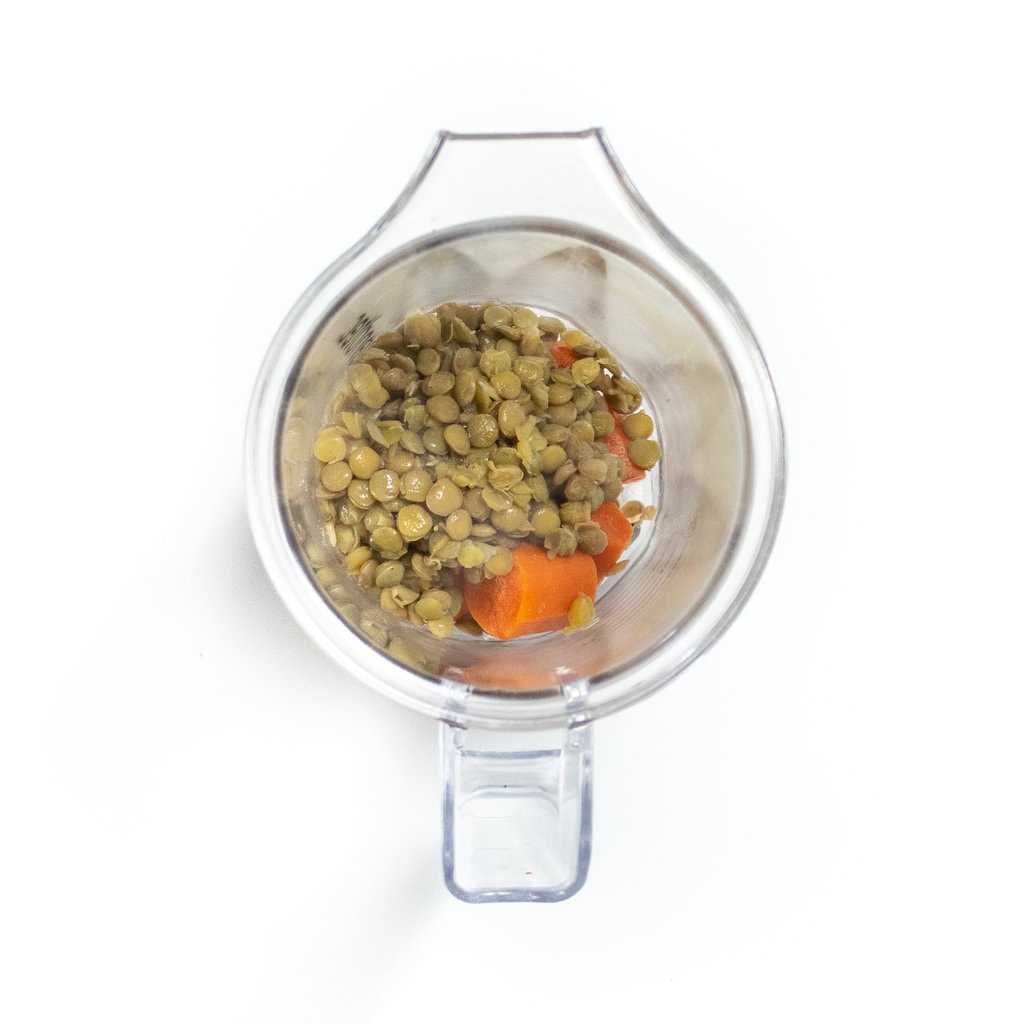

Lentil Baby Puree
To make a simple baby puree with lentils, just cook the lentils with some peeled and chopped carrots along with the lentils to give the puree a thicker base. You can also use sweet potatoes, apples, or red peppers.

Lentils for Baby-Led Weaning
Lentils are a great first food for your baby due to all of the health benefits. They can be served on their own with some seasonings or mixed into other dishes to give them a boost of protein and fiber.
- 6+ months – Mashed: At this stage, babies are using a palmar grasp to pick up food, so try to serve them mashed so they can scoop them up or whole but mixed into other foods that they can easily pick up, like mashed potatoes, avocado, or yogurt. Lentils mashed on toast, mixed into burger patties, veggie patties, pasta, or pre-loaded onto a spoon are all good ways to serve them.
- 9+ months – Whole: The pincer grasp starts to develop around this age so you can start serving whole lentils to help give your baby practice. You can also continue to serve the ways listed above.
- 12-24+ months – Utensils: Toddlers start to get the hang of utensils at this age so you can encourage them to eat lentils with a fork or spoon to practice their utensil skills.
Storage Instructions
Lentil Puree
Refrigerator
You can store it in an airtight container in the fridge for up to 4 days.
Freezer
This puree can be frozen for up to 4 months.
- Spoon puree into a freezer storage container – do not overfill.
- Place the lid on the storage container or cover it with a piece of saran wrap and label it with the date and recipe name.
- Place the tray into the freezer and let freeze completely – preferably overnight.
- Pop out the baby food cubes and place them in a zip-lock baggie or stasher bag – don’t forget to re-label the baggie or stasher bag for future reference.
Baby-Led Weaning
You can store cooked lentils in an air-tight container in the fridge for up to 4 days.
Combination Purees
While Lentil Baby Puree is great by itself, it’s also super easy to mix and match with other nutrient-dense baby food purees. Give these fun flavor combos a try!
Expert Feeding Tips
- Although you don’t need to soak dried lentils, soaking them does reduce cooking time for some varieties and can improve digestion. Aim to soak lentils for 2-4 hours if you want to experiment with this.
- It’s always a good idea to rinse your lentils, as sometimes you’ll find small rocks or debris mixed in with the lentils.
- Plant-based sources of iron, such as lentils, are less easily absorbed than animal sources of iron. You can increase absorption by serving lentils with foods rich in vitamin C, such as berries, broccoli, bell peppers, or mangoes.
- Serve cooked lentils on top of foods that are easy to scoop for baby, such as mashed vegetables, grain porridges, or yogurt. Or use lentils to thicken veggie purees or soups.
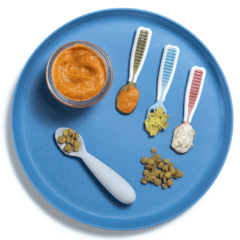
Get the recipe: How to Serve to Lentils to Baby (purees & blw)
Ingredients
Lentil Puree
- 1/4 cup dry lentils, rinsed with any stones or bad lentils picked out
- 1 1/2 cups water
- 2 medium carrots, peeled and roughly chopped
Lentil for Baby-Led Weaning
- 1/4 cup dry lentils, rinsed with any stones or bad lentils picked out
- 1 1/2 cup water
Instructions
Lentil Puree
- In a small saucepan, add the water, carrots, and rinsed lentils. Bring to a boil, and then simmer with the lid on but tilted. Cook for 15-20 minutes or until just tender.
- Strain away any liquid.
- Add the lentils and carrots to a blender.
- Turn blender on medium-high and puree until smooth. Add additional water in 1/4 increments if the puree is too thick. Serve a portion and then store the reamaining puree in the fridge and/or freezer for later meals.
Lentil for Baby-Led Weaning
- In a small saucepan, add the water, and rinsed lentils. Bring to a boil, and then simmer with the lid on but tilted. Cook for 15-20 minutes or until just tender. Strain away any liquid.
- Serve the lentils to your baby in an age-appropriate way – either mashed by themselves or with another cooked fruit or vegetable and served on a self-feeding spoon, mashed and spread on toast, or added into another food such as a burger or meatballs.
Notes
Did you make this recipe?
Tag @babyfoode on Instagram and hashtag it #babyfoode!

